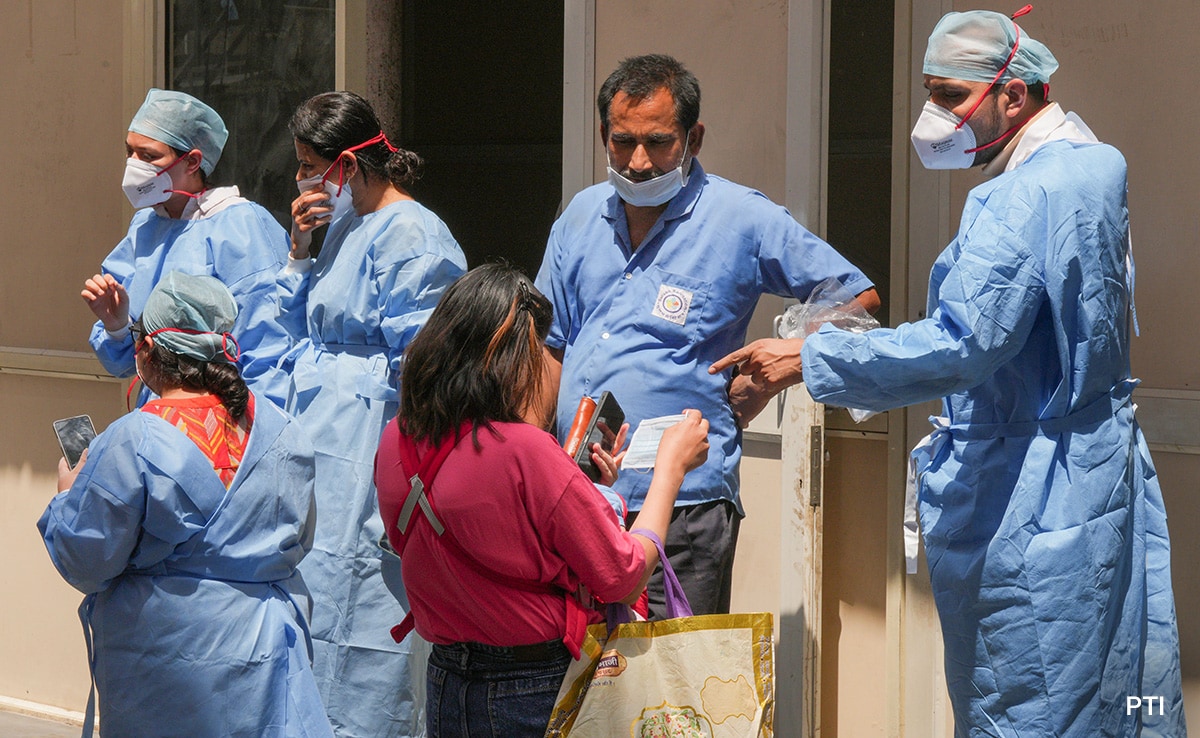
“There is no need to panic. It causes mild sickness,” he said.
New Delhi:
After the national capital reported its first case of JN.1 variant infection, Delhi Health Minister Saurabh Bharadwaj said that there is no need to panic and that it only causes mild sickness.
“JN.1 is a sub-variant of Omicron and is a mild infection. This is the one spreading in south India. There is no need to panic. It causes mild sickness,” Mr Bharadwaj said while speaking to ANI.
Earlier today, Delhi reported the first case of JN.1 variant infection.
“Delhi has reported the first case of JN.1, a Sub-Variant of Omicron. Out of the 3 samples sent for Genome Sequencing, one is JN.1 and the other two are Omicron,” Saurabh Bharadwaj told ANI.
Meanwhile, a total of 109 JN.1 COVID variant cases have been reported in the country as of December 26, Health Ministry sources said on Wednesday.
Amid rising concerns over the emergence of the new variant of the coronavirus, Dr Bobby Bhalotra, Vice Chairman in the Department of Chest Medicine, Gangaram Hospital, said, “The new variants are so far mild; they are from the family of the Omicron virus. So, the cases are not too much to be worried about; there is no panic as such but yes, it is a sign that it has come back again. It may flourish because it is more infectious than the normal COVID virus so we have to start taking precautions. Precaution and prevention are better than cures. Take precautions so that doesn’t spread for them.”
“There is an increase in cases of respiratory illness in OPD of 20-30 per cent due to weather changes, viral illness and an increase in pollution in the national capital,” he added.
He further said that patients who already have Asthma, interstitial lung disease, or COPD are getting exacerbations mostly from various viruses, including the H1N1 virus or swine flu.
“Despite having a vaccine against these viruses, especially H1N1, people are not getting themselves inoculated in time, and the immune system, which can be prevented by taking a vaccine, is not being used by many patients. So, this increasing exacerbation of breathing problems is due to viruses and more because of pollution. Pollution in our city is very high. And that impacts the lungs of patients, especially those with asthma, bronchitis, and interstitial lung disease. So that’s another reason why the number of patients is higher these days in the OPDs,” the Doctor said.
The World Health Organization (WHO) recently classified JN.1 as a variant of interest, distinct from its parent lineage BA.2.86. However, the global health body emphasised that the overall risk posed by JN.1 remains low based on current evidence.
(Except for the headline, this story has not been edited by NDTV staff and is published from a syndicated feed.)




